Designing a warm earthy bedroom involves more than choosing muted colors. It’s a careful layering of natural materials, textures, and tonal balance to create a space that feels grounded and refined. From terracotta finishes to handcrafted lighting, each element plays a role in shaping atmosphere and visual harmony. The ideas below offer a structured approach to designing bedrooms that reflect warmth through thoughtful design choices.
1. Terracotta Clay Wall for Cozy Warmth
A terracotta clay wall introduces natural depth through surface texture and tone. The pigment works well with soft daylight and matte finishes. It enhances the warmth of the space without relying on excessive decor. Pairing it with light oak furniture adds balance and visual contrast. Minimal bedding in white or stone shades allows the wall color to remain dominant. This approach creates a strong visual anchor behind the bed.
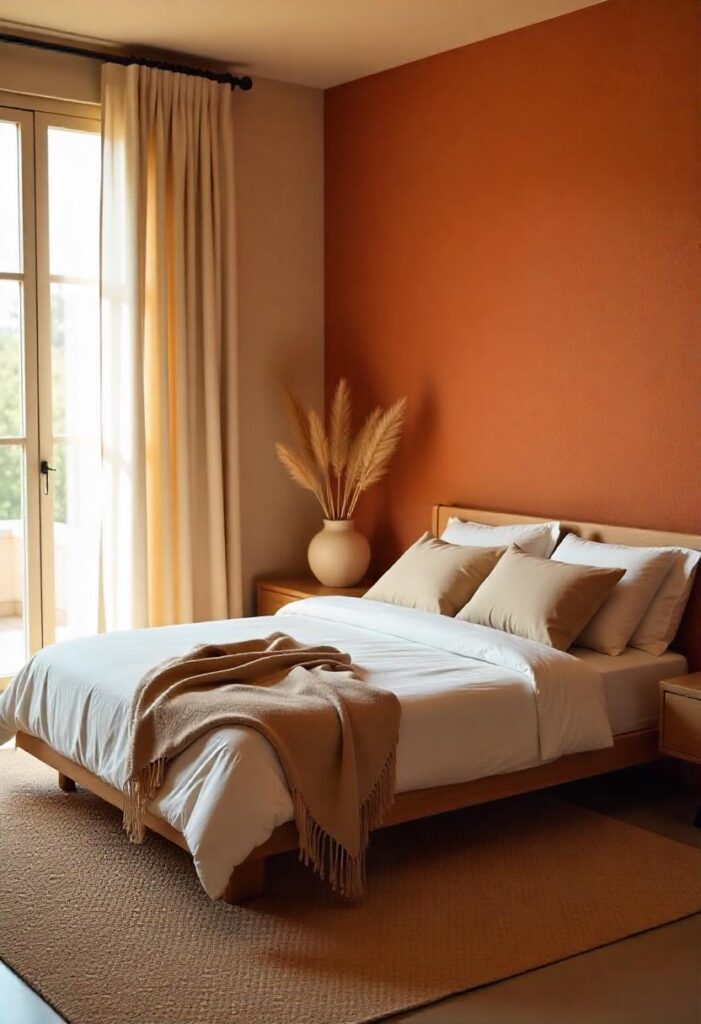
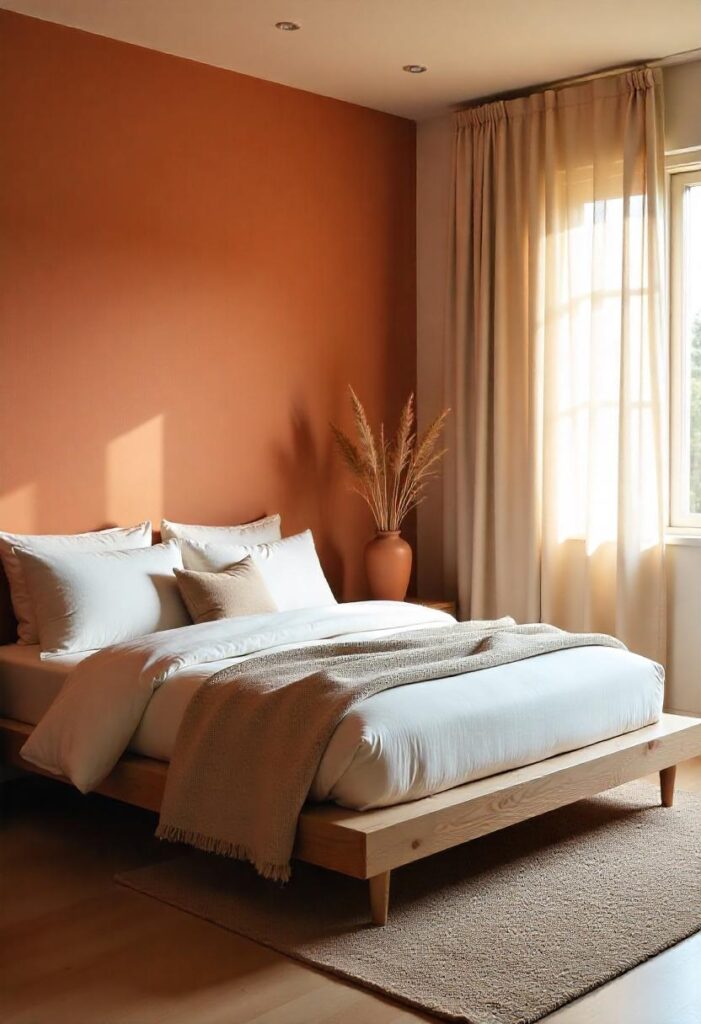
2. Layered Earth-Toned Bedding That Feels Lived In
Layering different natural fabrics creates a comfortable and grounded effect. Earth-toned bedding in sand, taupe, rust, and olive tones provides tonal richness. Linen, cotton, and wool each add a distinct visual and tactile layer. Pillows and throws in multiple weights and colors help break visual flatness. A jute or woven rug beneath adds warmth to the floor plane. This method of styling enhances depth without cluttering the space.
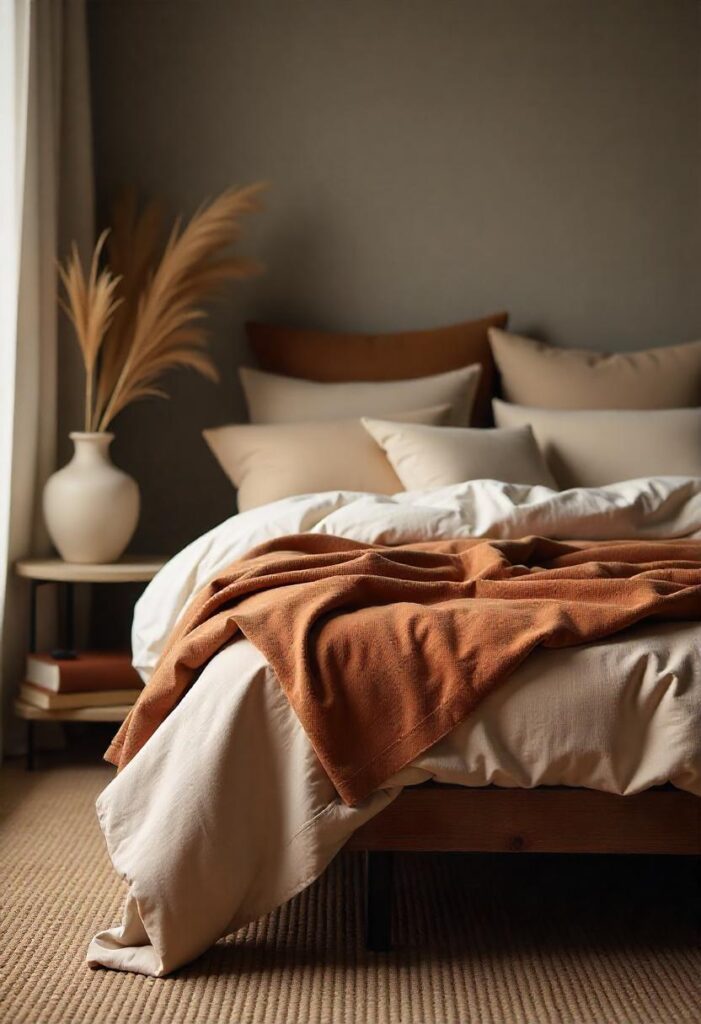
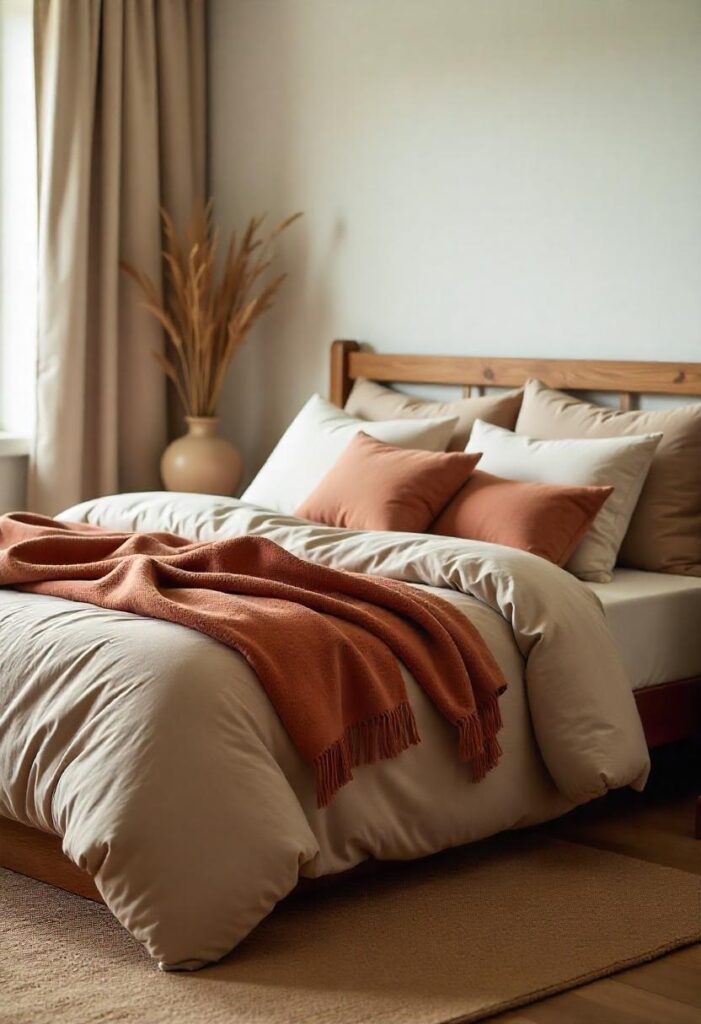
3. Reclaimed Wood Furniture with Natural Texture
Reclaimed wood adds visible texture and authenticity to the bedroom environment. Pieces with preserved grain, marks, and knots create visual interest. These materials complement neutral textiles and understated walls. A reclaimed headboard or bench supports the natural color palette. Combining these elements with stone-toned walls enhances their tactile presence. This design direction integrates historical character with material integrity.
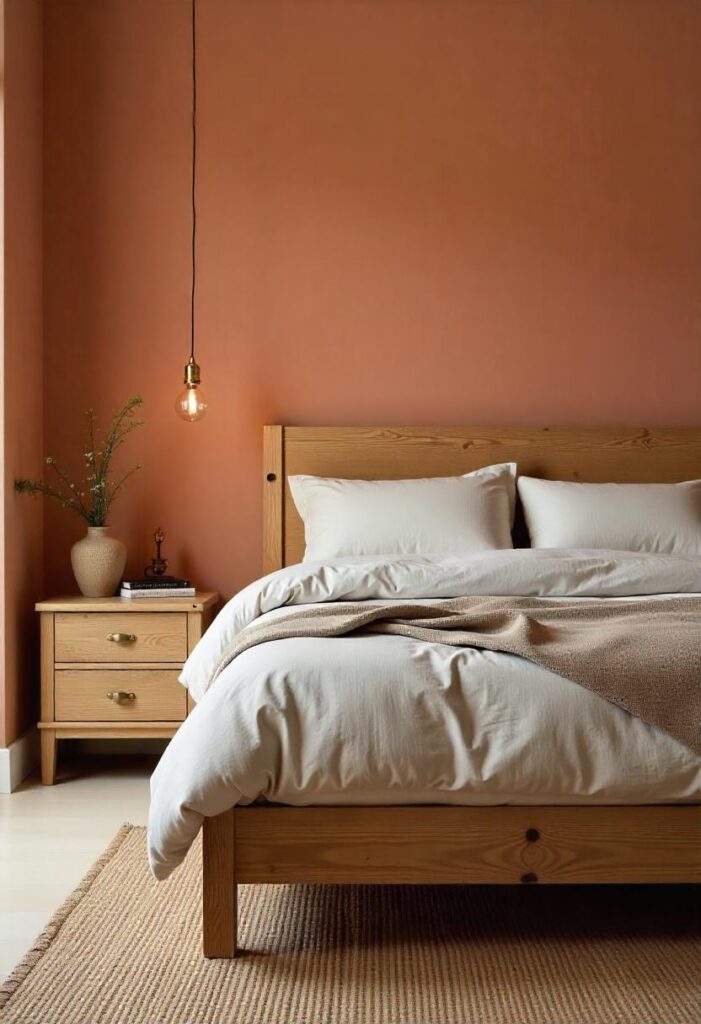
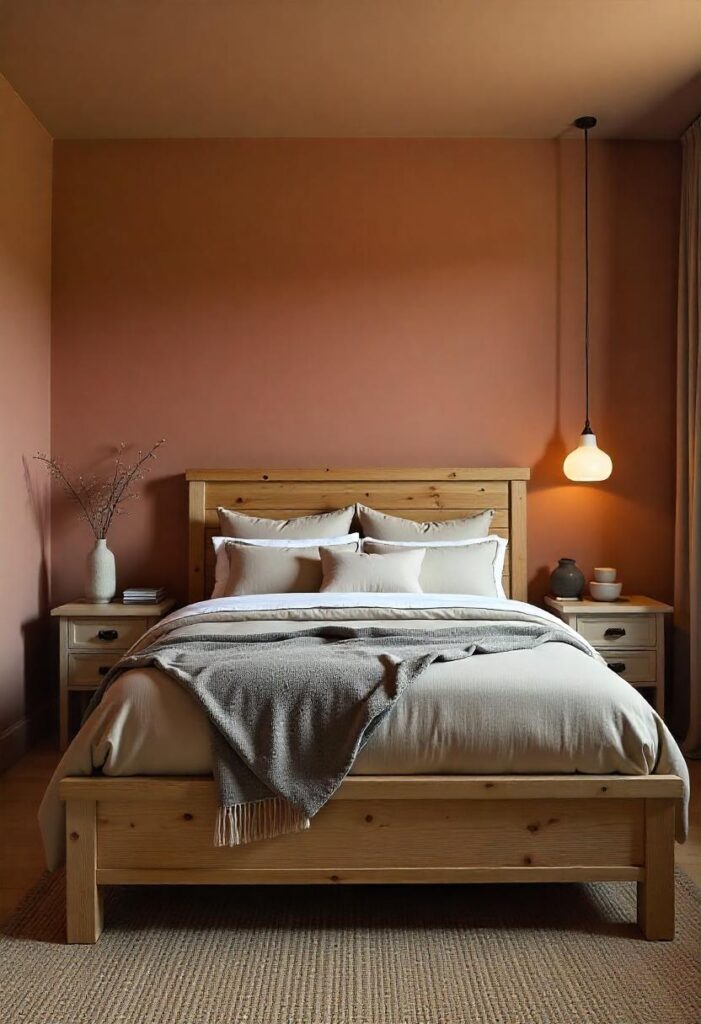
4. Earthy Wall Art in Soft, Natural Colors
Wall art in muted earth tones can support the bedroom’s material palette. Abstract compositions in sienna, ochre, and charcoal work especially well. Frames in maple, walnut, or oak blend naturally with most wood furniture. Arranged above the bed or across a main wall, they contribute to spatial balance. Use two or three pieces rather than a gallery layout. Art placement should reflect the horizontal rhythm of the bed.
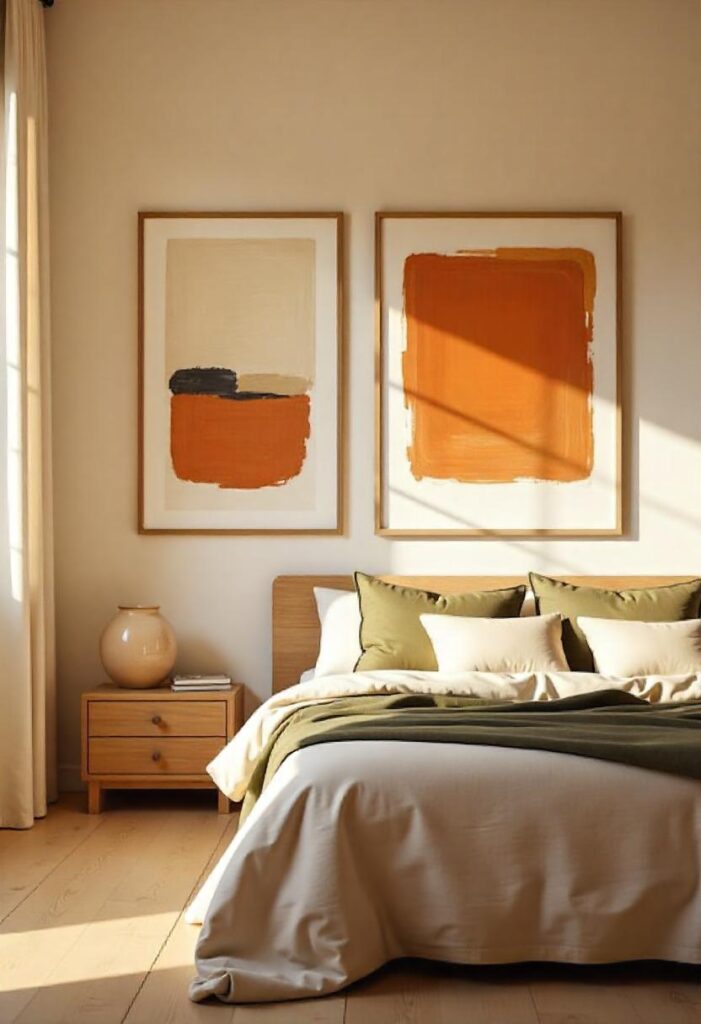
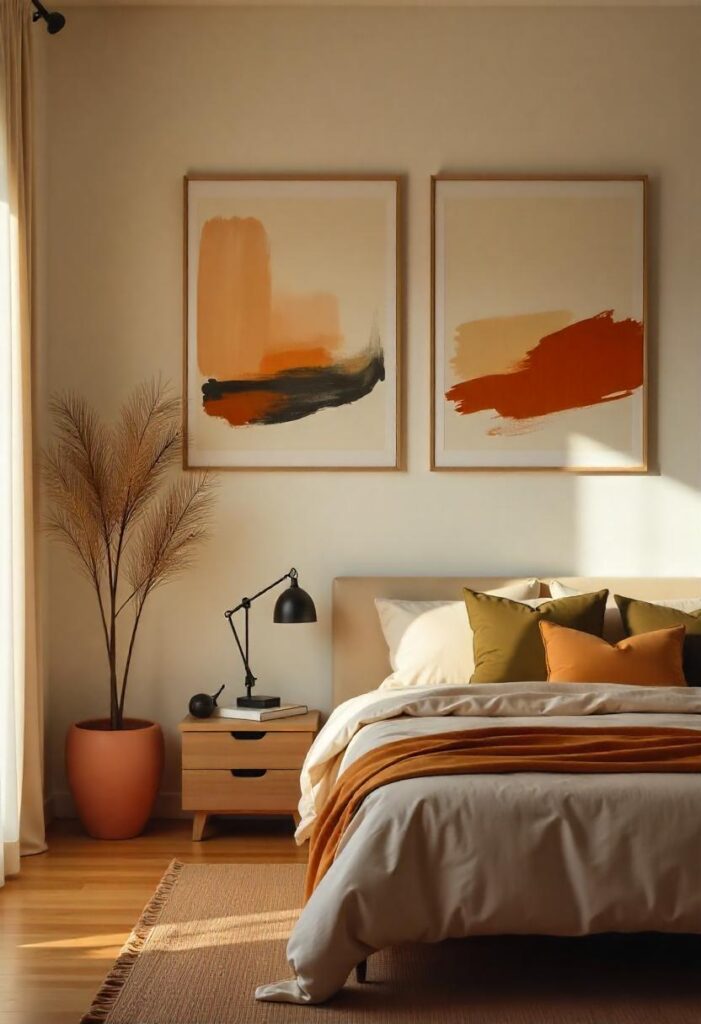
5. Handmade Clay or Ceramic Lighting
Clay and ceramic lighting pieces introduce material contrast and a sculptural element. These lights often come in matte finishes that pair well with linen or stone. Choose bedside lamps, wall sconces, or pendants based on room size and layout. The light they emit tends to be softer and more diffused. Clay tones range from pale beige to deep terracotta. Their irregular surface finishes reinforce the natural theme.
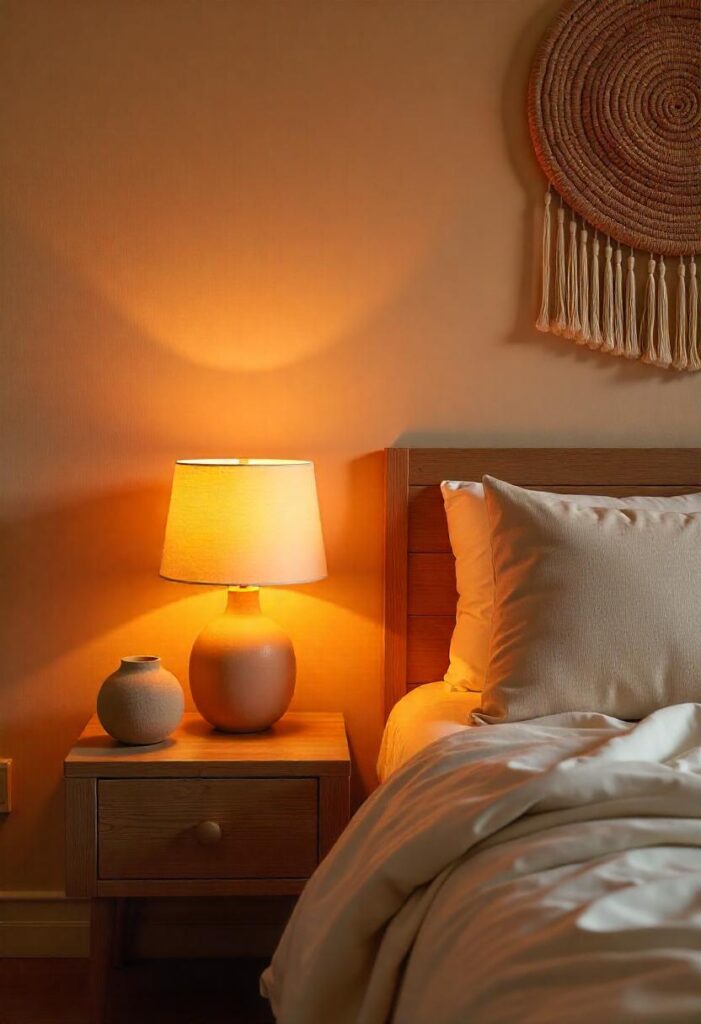
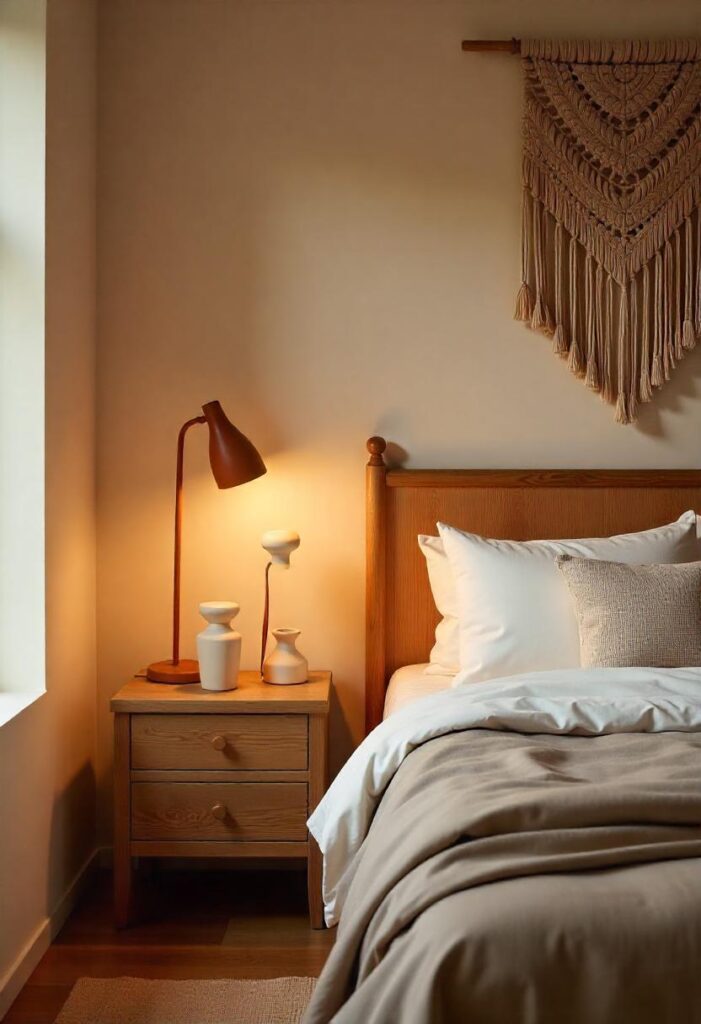
6. Earth-Tone Color Palette You’ll Want to Copy
Earth-tone palettes should be layered with intent across materials and finishes. Key tones include olive green, burnt sienna, soft taupe, and off-white. Walls, textiles, and furniture should share tonal relationships without strict uniformity. Use darker tones in accent pieces to ground the space. Warm wood and aged metals can help balance dominant color fields. The goal is to maintain consistency while allowing variation in texture.
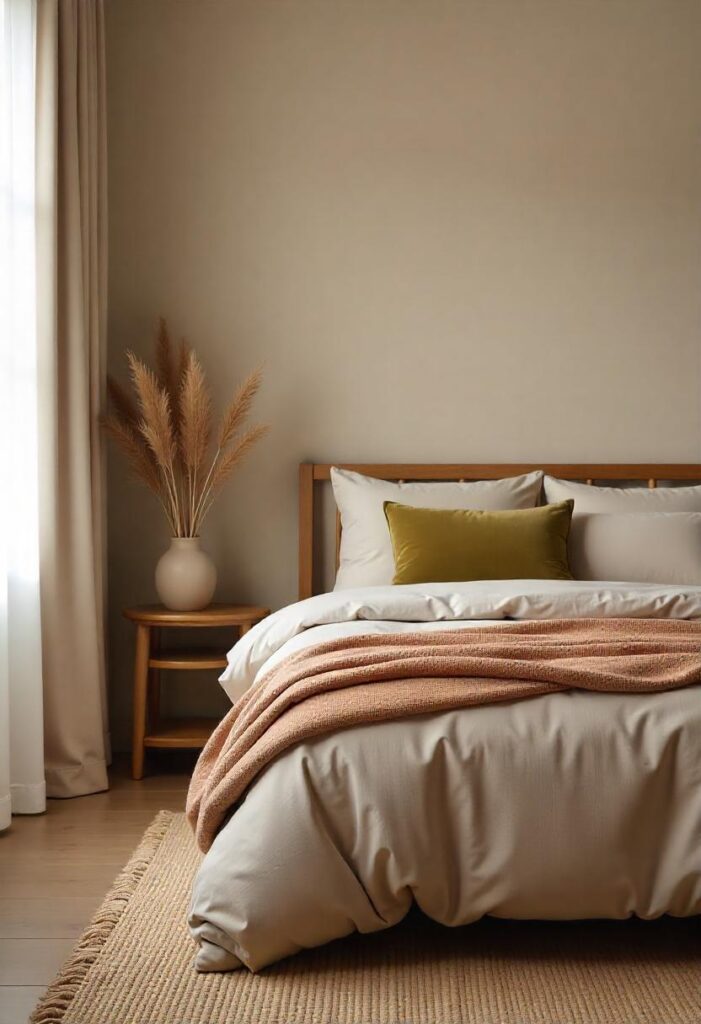
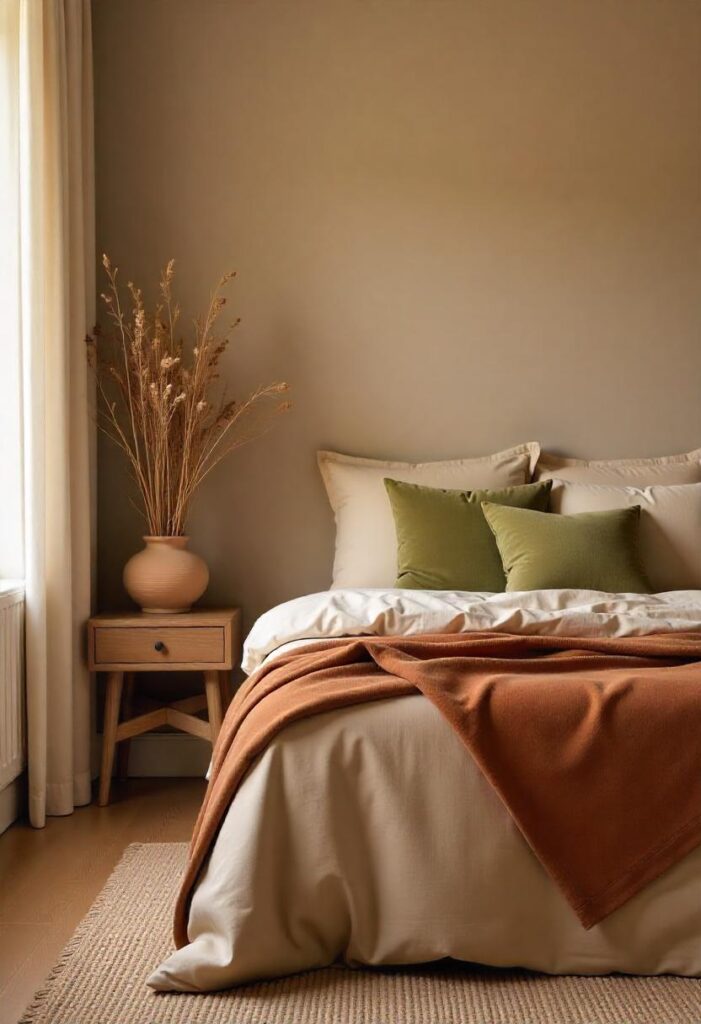
7. Curved Headboards and Soft Shapes
Rounded forms introduce spatial calm and visual softness into the bedroom. A curved headboard in suede or velvet serves as a focal point. Other circular elements may include mirrors, light fixtures, or nightstands. These shapes contrast well with linear walls and rectangular layouts. Arches and curves direct the eye gently across the room. This approach supports a fluid and restful visual flow.
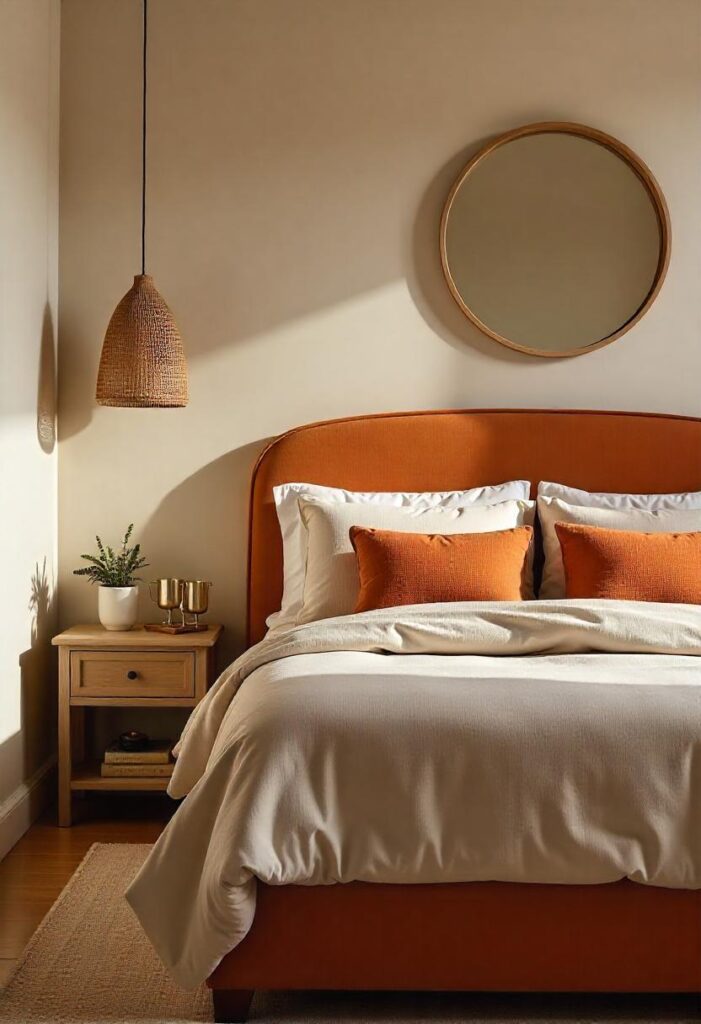
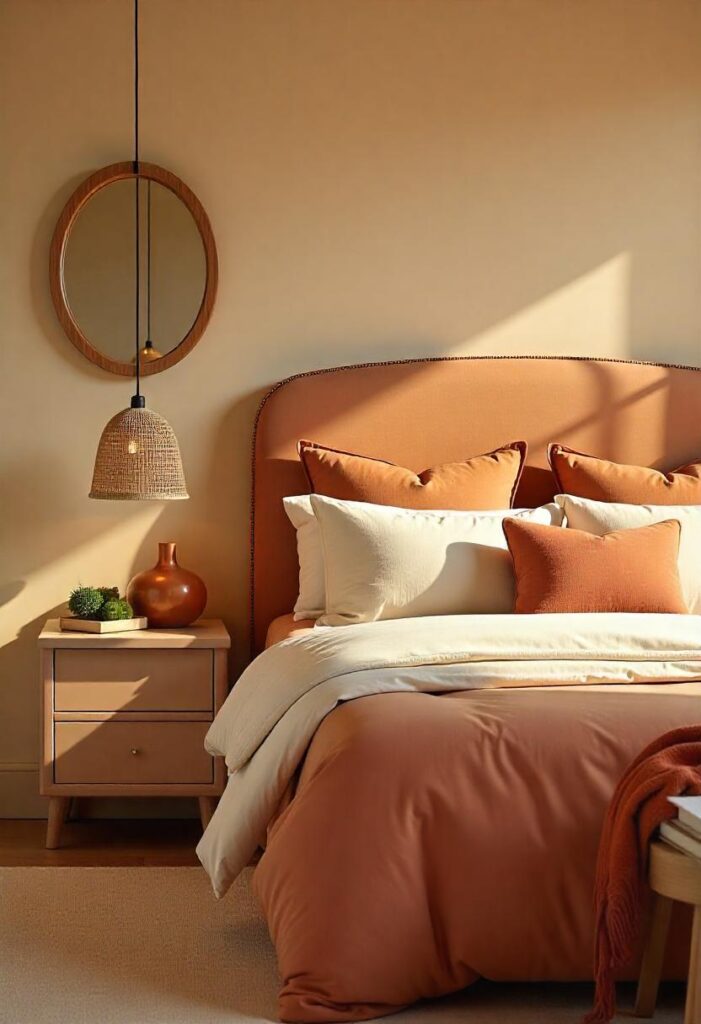
8. Cane & Rattan Accents (Without the Boho Overload)
Cane and rattan add texture but must be applied with restraint. Look for clean-lined furniture featuring subtle rattan panels or woven details. Avoid excessive layering of similar patterns or materials. Combine these pieces with solid wood or powder-coated metal for balance. Neutral bedding and soft drapes prevent the room from feeling overstated. Rattan used this way supports material diversity without overt thematic styling.
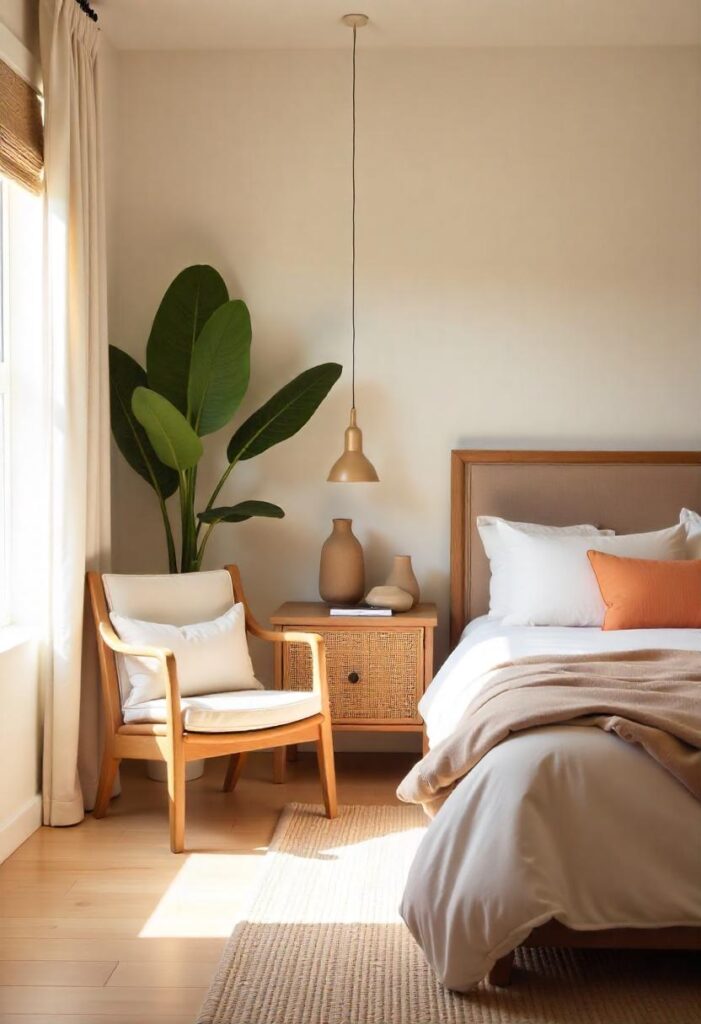
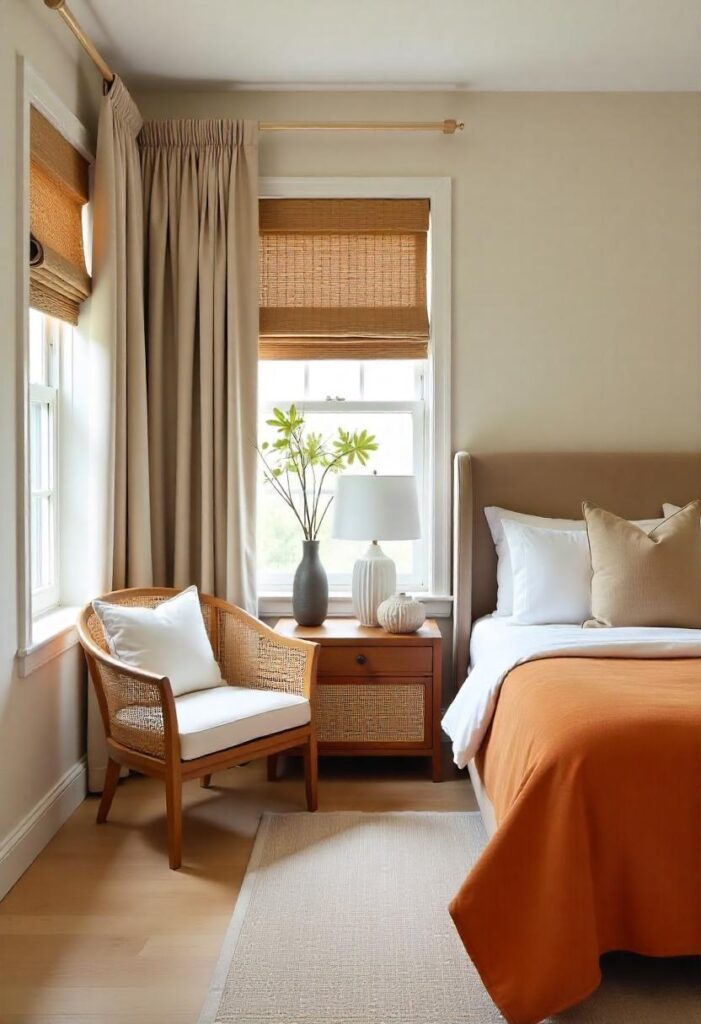
9. Woven Wall Panels and Textured Earth Tones
Woven wall panels create vertical texture while staying within the natural material range. These panels may be framed behind the bed or span the entire wall. Bedding in caramel, almond, and stone tones complements this effect. Woven pieces also reduce the need for additional wall art. Combine them with jute flooring and ceramic accessories to unify the room. The result is a tactile environment with quiet depth.
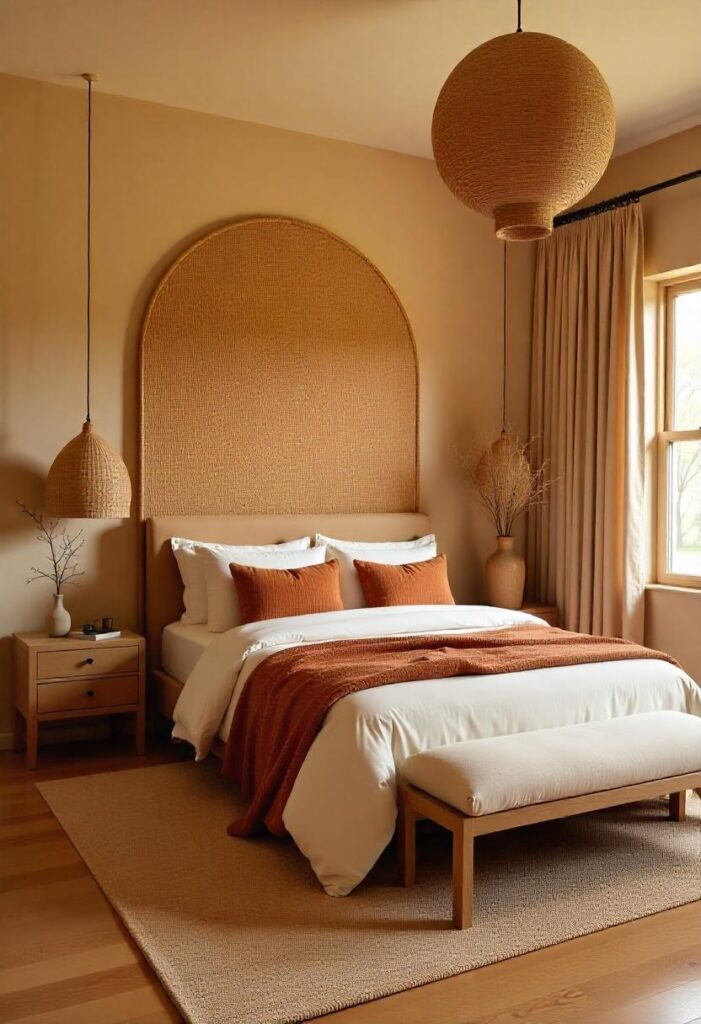
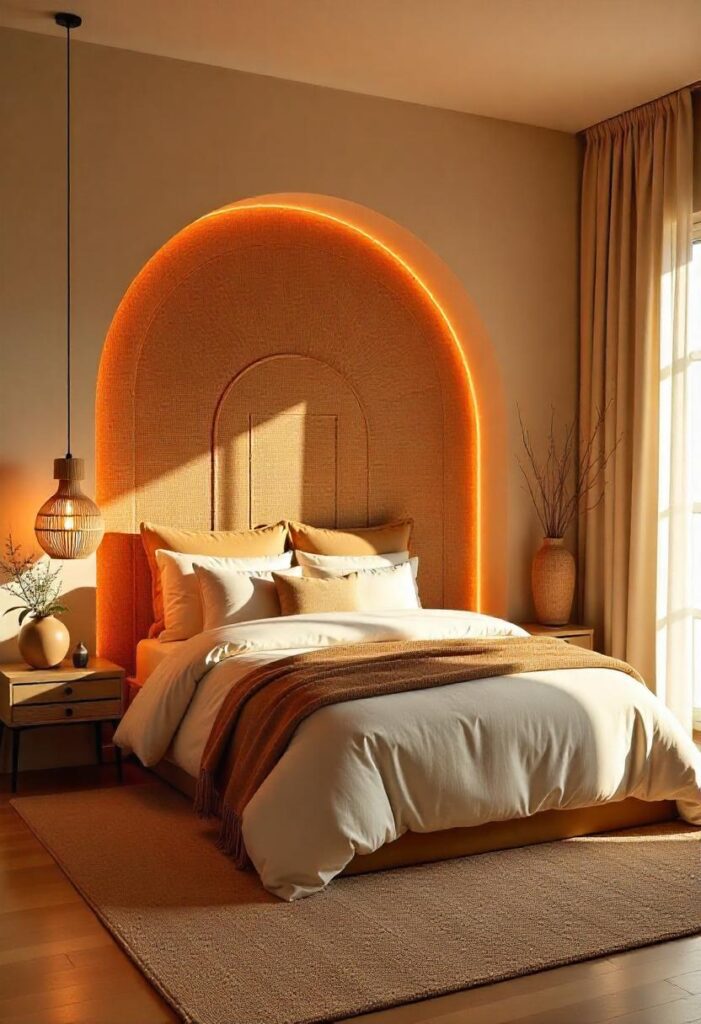
10. Japandi-Inspired Earthy Bedroom with Minimal Layers
This design blends Japanese and Scandinavian elements with earthy materials. Use a low platform bed, clean-lined wooden furniture, and soft tonal bedding. Select walls in soft clay or plaster-like finishes for visual warmth. Keep decor minimal, with only essential elements present. Use shoji-style lighting or rice-paper blinds for filtered natural light. This concept emphasizes balance, material integrity, and tonal harmony.
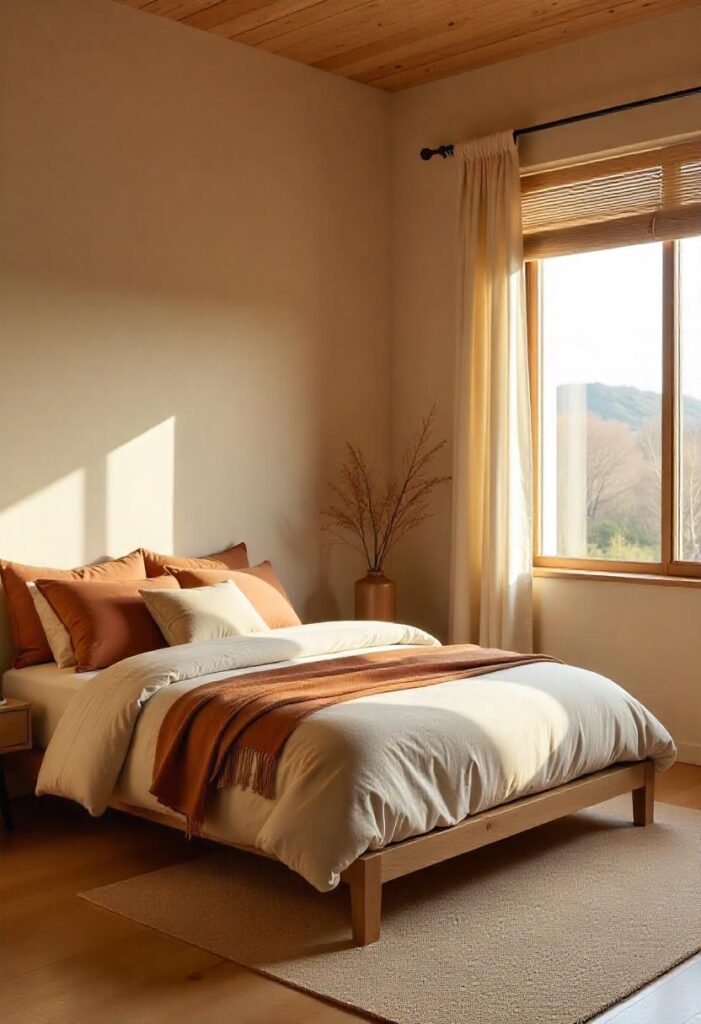
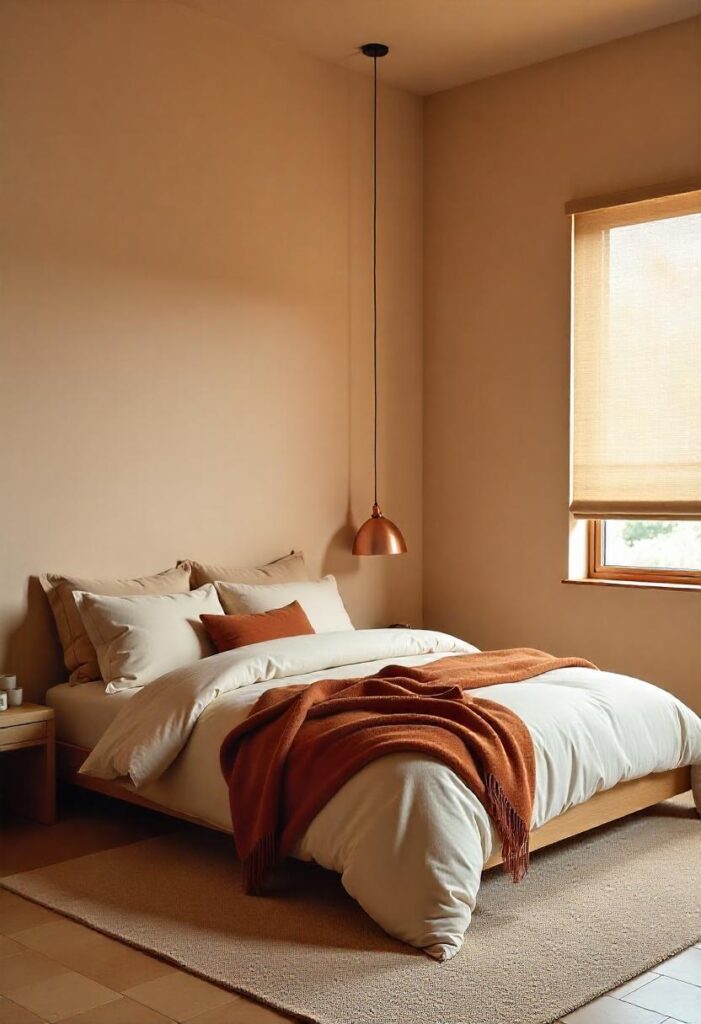
Final Thoughts:
A warm earthy bedroom draws strength from its connection to natural elements and materials. Each design concept in this guide offers a distinct way to build depth, softness, and tonal richness without relying on trends. With careful attention to balance and material selection, these spaces remain timeless and visually enduring. For anyone seeking a more grounded approach to interior styling, these ideas offer a clear place to begin.
